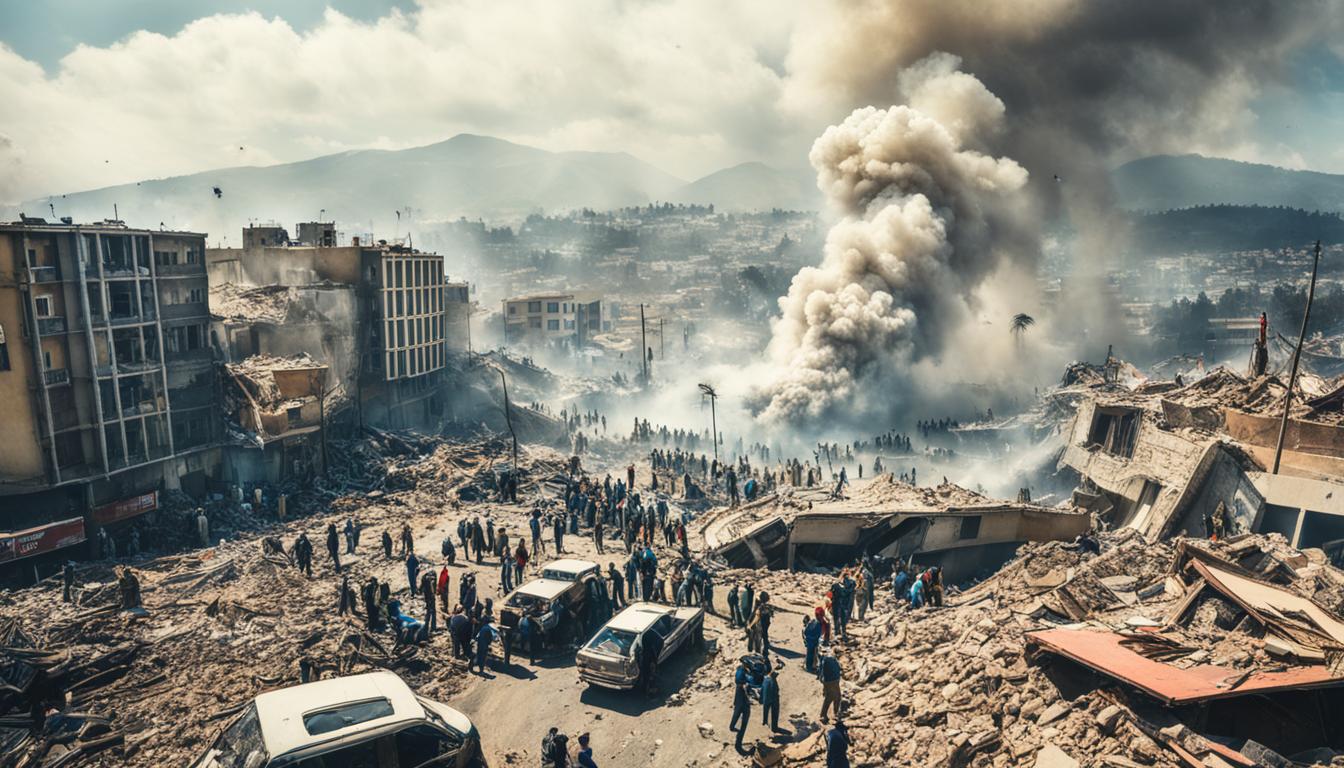Does Addis Ababa Have Earthquakes?
When we think of earthquake-prone areas, cities like San Francisco and Tokyo often come to mind. But what about Addis Ababa, the capital city of Ethiopia? Does this bustling metropolis also experience seismic activity? The answer may surprise you.
The truth is, Addis Ababa does have a history of earthquakes. Over the years, this city has experienced notable seismic events, reminding us of the need for preparedness and safety measures. But what are these measures, and how do they ensure the well-being of its buildings and residents?
Join us as we explore the importance of building codes in earthquake-prone areas like Addis Ababa. We’ll delve into the local regulations, building standards, and performance requirements that play a crucial role in safeguarding against earthquake damage. Discover how compliance with these codes and thoughtful planning can make all the difference when it comes to protecting a city and its people.
Key Takeaways:
- Addis Ababa, Ethiopia experiences seismic activity in the form of earthquakes.
- Compliance with local building codes is crucial for ensuring the safety and resilience of structures.
- Building codes may vary depending on the seismic hazard of the region.
- Understanding the history and frequency of earthquakes in Addis Ababa helps in preparedness and planning.
- The implementation of appropriate safety measures can improve the city’s resilience to earthquakes.
Importance of Building Codes in Earthquake-Prone Areas
Building codes, also known as building standards, play a crucial role in ensuring the safety of buildings in earthquake-prone areas. These codes provide regulations for planning, design, and construction that aim to prevent or minimize damage caused by earthquakes.
In Addis Ababa, it is important to review and understand the local building regulations to determine the extent to which they consider the seismic hazard in the region. Compliance with these building standards is essential for the construction of safe and resilient structures.
Building codes may include provisions for different performance levels of buildings, depending on their importance and the potential consequences of their failure. It is necessary to consider the required performance level for each building in Addis Ababa and set appropriate building-performance goals.
Regular revisions of building standards are necessary to ensure that they align with the latest earthquake information and engineering developments. By constantly updating and improving building codes, we can enhance earthquake protection and mitigate the potential risks associated with seismic hazards.
Incorporating seismic design principles and practices into building codes helps to safeguard lives, protect infrastructure, and reduce the economic impact of earthquakes. It is a collective effort to ensure the highest level of earthquake protection in Addis Ababa and other earthquake-prone areas.
History of Earthquakes in Addis Ababa

Addis Ababa has a history of notable earthquakes, each with varying magnitudes and impacts. Some of the recorded earthquakes in the region include a 6.2 magnitude earthquake in Sardo in 1969, resulting in the destruction of many houses, and a 5.1 magnitude earthquake in Jimma, Hosaena, Shenk’ola, and Wenjela in 2010, causing damage to numerous houses. These events serve as reminders of the seismic activity in Addis Ababa and the need for preparedness and adherence to building codes. The list of earthquakes in Addis Ababa spans several decades and showcases the occurrence of earthquakes in the region.
Note: The image above visually represents the seismic activity in Addis Ababa, where the city has experienced notable earthquakes over the years.
Recent Earthquakes in Addis Ababa

Addis Ababa, the capital city of Ethiopia, has been experiencing a series of recent earthquakes, indicating ongoing seismic activity in the region. These earthquakes serve as reminders of the need to remain informed and prepared for potential seismic events in the city.
The most recent earthquake in Addis Ababa occurred approximately 2 years ago, with a magnitude of 4.00. It was located approximately 96 km northeast of the city. This earthquake, though relatively moderate in magnitude, highlights the importance of being aware of the seismic activity in Addis Ababa and taking necessary precautions to ensure the safety of buildings and residents.
Conclusion
Addis Ababa, the capital city of Ethiopia, is no stranger to seismic activity in the form of earthquakes. With a history of notable earthquakes and recent seismic events, it is crucial for us to prioritize preparedness and adhere to building codes to ensure the safety of our buildings and residents. Building codes and regulations play a vital role in safeguarding our city against potential seismic hazards.
By complying with these codes and taking into account the seismic hazard in the region, we can set appropriate building-performance goals that prioritize the resilience of our structures. It is essential for us to fully understand the seismic activity in Addis Ababa and implement the necessary safety measures to protect our infrastructure and population.
Through the implementation of building codes and regulations, we can enhance our city’s ability to withstand earthquakes and mitigate potential damages. By doing so, we prioritize the seismic safety of Addis Ababa and ensure the well-being of our community. Let us work together to make our city more resilient and secure!




